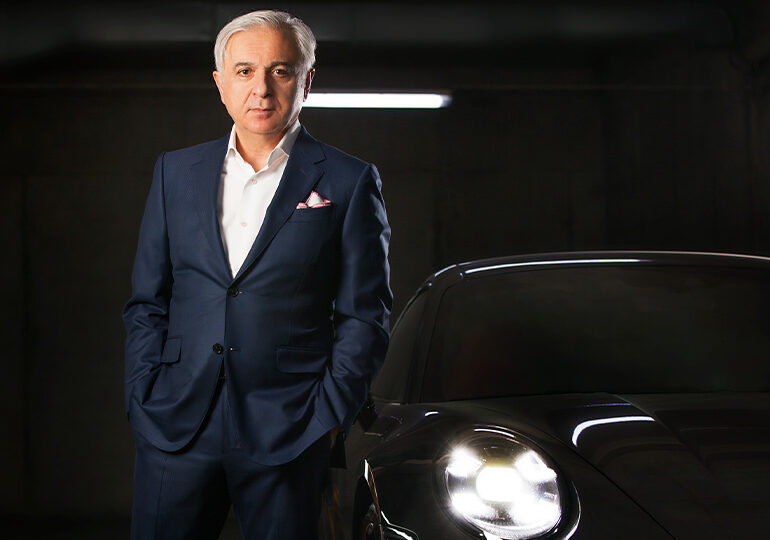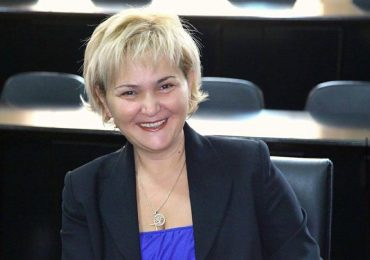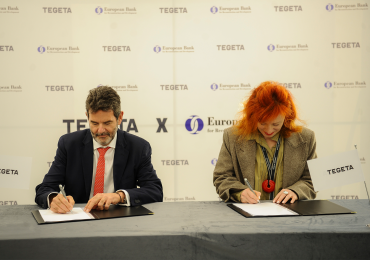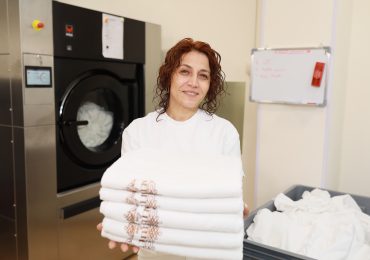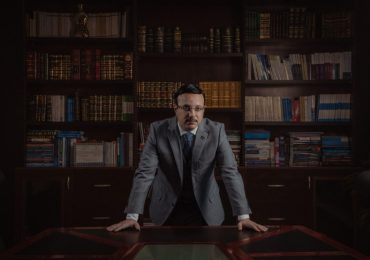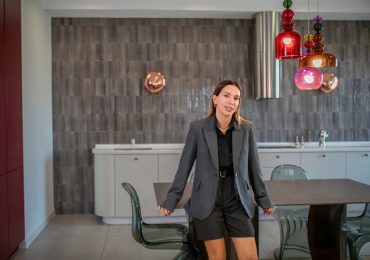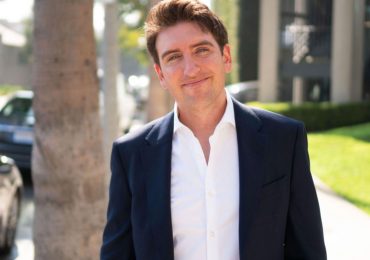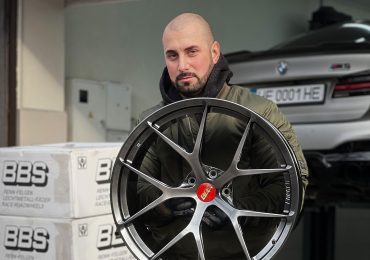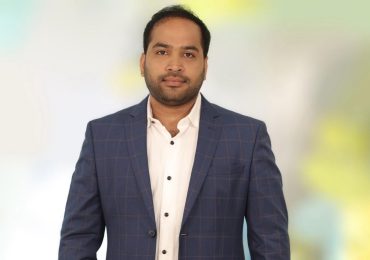Having known the hero of our cover story for almost two decades, I did not have to think long when he offered me the opportunity to talk privately about his life journey, his companies, and his undertakings. It was a unique opportunity to tell our readers the story of a company that came into existence at around the same time as the independent Republic of Georgia and whose timeline, in many ways, reflects the development of our country. It is fitting that the fairy-tale story of Tegeta Holding begins in the “Tsitelkuda” (Red Riding Hood) building. Yet, there is so much more to say about company founder Temur Kokhodze, who now values his business at over ₾1 billion and is also the owner of the Sairme resort.
Temur Kokhodze’s life story certainly does not resemble a fairy tale. The boy from Baghdati has lived a tough life, his actions reflecting the characteristics of each particular period from the Soviet era to independent Georgia. In 1977, he came to Tbilisi to study at the State Polytechnical Institute (today’s Georgian Technical University). After having graduated with an automotive engineering degree specializing in transport operations, he was offered a post at the State Automobile Inspectorate in Marneuli. However, he chose to reject a career in the Militsiya and become involved in construction instead. Temur Kokhodze does not remember the exact location of the construction in the Nadzaladevi district. Still, he clearly recalls renovating up to thirty apartments in the 16-storey tower blocks that were built in a new part of Saburtalo, opposite the “Lechkombinati” medical center on Kavtaradze Street. He proudly states that he is still proficient in welding, plastering and other tools of the trade that served him so well when he started doing business as a young man.
In 1987, Temur Kokhodze learned that the Georgian Soviet Republic would soon have a branch of Sovtransavto – the only organisation in the USSR that transported goods internationally. That year, the company opened its twelfth office in the city of Poti, where it used the local port to transport European goods to Iran. “We were mainly moving dry cargo such as paper and rice. Demand for the paper was particularly high. 1,520 vehicle loads were sent on this route each day. I started out as an ordinary dispatcher writing permits,” Temur recalls with a smile. “They liked my handwriting, and my Russian was flawless after graduating from university. I received a promotion every six months. My last two positions were Head of Operations and Deputy Rector. The latter effectively meant that I was the branch director.”
The president of Sovtransavto was Moscow-based Georgian Teimuraz Tatishvili, who was born in Tbilisi but grew up in Russia. His influence even exceeded that of some state ministers. A special relationship developed between him and the young Temur Kokhodze, and everything went smoothly until the breakup of the Soviet Union.
∗ ∗ ∗
At the dawn of the nineties, the Sovtransavto headquarters decided to close the Poti branch and move the whole fleet of vehicles to Moscow. Only a small percentage of employees managed to find work elsewhere within the organisation through contacts in Moscow. The select group of former Poti branch employees who remained with the company included Temur Kokhodze.
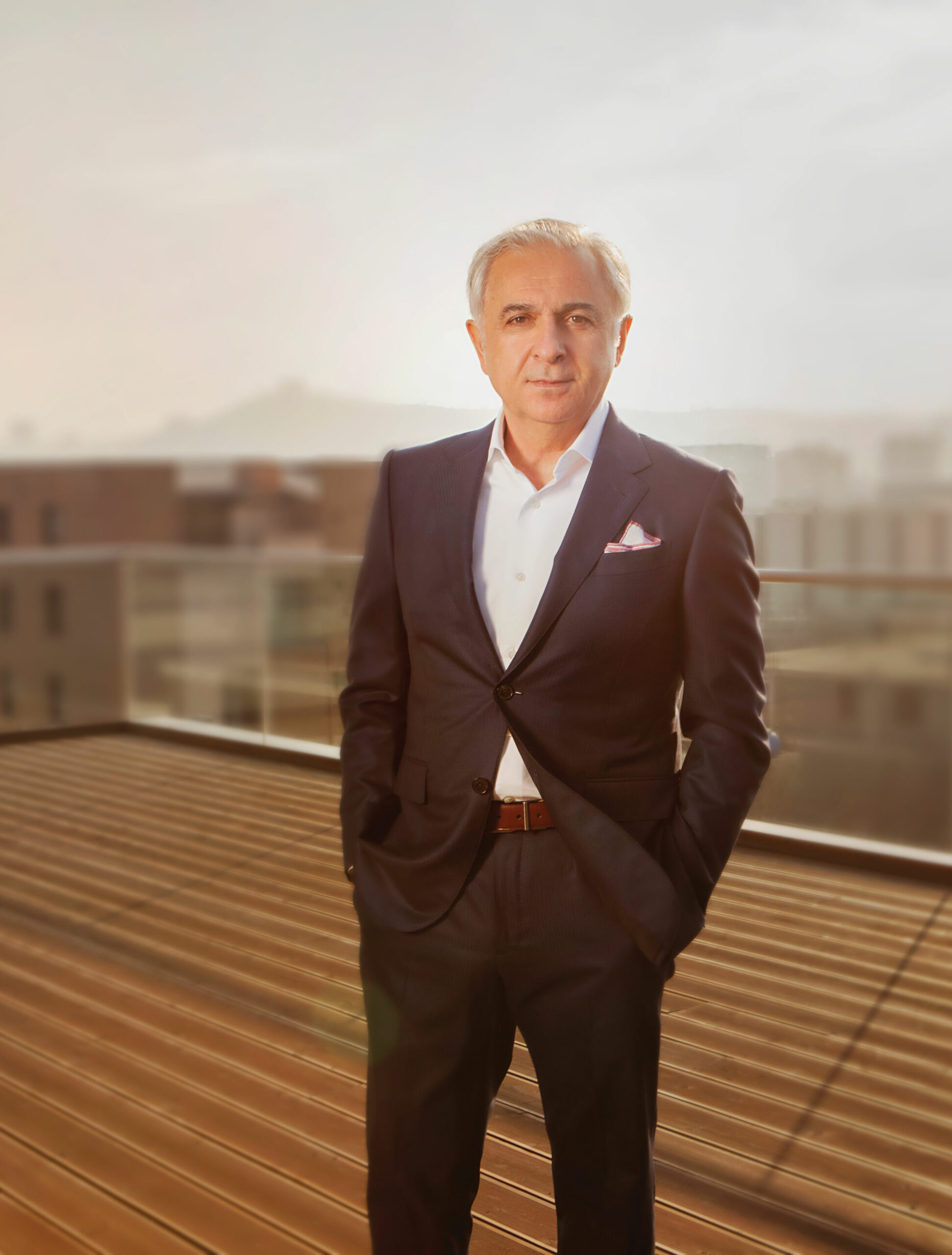
However, about a year after the closing of the Poti office, Temur received an ultimatum from his father, demanding that he return to Georgia. The situation in the family became tense. He informed the Sovtransavto leadership about his decision to leave the company. Teimuraz Tatishvili called him into his office and tried to change his mind, telling him that only a madman would want to return to Georgia – a dark, chaotic place full of armed gangs at the time. Instead, Temur was offered a stable job, an apartment and all the other luxuries of contemporary life in post-Soviet Russia. Still, to no avail – he would not say no to his father and his family. As a parting gift, he received an Ikarus bus and two large trucks from Teimuraz Tatishvili and Sovtransavto to help him settle in Tbilisi until new opportunities came along. The Ikarus was a highly regarded vehicle that could be lucratively leased while selling it would have allowed the owner’s family to live carefree for at least a year.
Thus began Temur Kokhodze’s association with the legendary Hungarian bus manufacturer. Few would believe today that his business activities in independent Georgia started precisely with Ikarus.
∗ ∗ ∗
Temur held out in Georgia until 1992. The country was ravaged by civil war, armed gangs and blackouts. His business was standing still, and he was forced to sell his Ikarus. To this day, he regrets the sale of this special gift from a special person. He went back to Moscow and made several unsuccessful business ventures. In 1994, Temur returned to Georgia and began to study the local market. Although initially unfamiliar with the local vehicle infrastructure, he soon noticed that there was a severe lack of spare parts because of the looting and destruction of Soviet-era warehouses. Even the Lilo technical supply facility was virtually empty. With the help of an old university friend, Temur developed a general understanding of the existing needs and demands of the vehicle parts market. He started to import different materials with limited capital but soon realized that trying to run a business with a few hundred dollars in your pocket is futile. He needed at least $20,000-$30,000 to conduct serious imports that would influence the market and his own revenue figures. You can imagine what it would have been like for a new business with no credit history to try obtaining a bank loan in the early nineties. Instead, Temur Kokhodze turned to a friend who lent him $50,000 – a very sizeable amount at that time. This was a sign of great trust, but it also came at a price: Temur had to pay 5% interest to the lender each month. He would eventually repay the whole sum with interest a year later. Before then, he visited every transport organization in Tbilisi and compiled a list of the spare parts they required. He was hoping to complete his first major import order on a budget of $30,000 but found that a lot more was required. He needed to go to Hungary in order to negotiate with the factory and try to place an order at beneficial terms. There were no other suppliers of original Ikarus bus parts in the post-Soviet space, which would have given Temur a great competitive advantage. He, therefore, borrowed more money, collected all his resources, and went to his former employer in Moscow. The Sovtransavto leadership mediated with the Hungarians on his behalf. Several weeks later, Temur arrived at the factory in Budapest and placed an order for the spare parts.
∗ ∗ ∗
Having spent $44,000 on the Ikarus parts, Temur went on to purchase a second-hand truck (WV LT 28), where he loaded the parts and got behind the wheel. Sovtransavto had helped him with a driver’s license. Armed with a map and plenty of water, he set course for Georgia via Romania, Bulgaria, and Turkey.
“I was nervous because I had never driven a vehicle of that kind before,” Temur recalls. “It took me eight days to get to Georgia, and I only had $600 of spending money left. As I recall, I had to spend most of it on bribes at different checkpoints. Corruption was everywhere, and I barely made it back to Tbilisi.”
That is the story of how the original Ikarus parts appeared in Tbilisi for the first time. It was truly an incredible feat. Back then, the whole fleet of Ikarus buses in the post-Soviet space was supplied with secondhand parts. Temur’s business took off. Having arrived in Georgia with the spare parts in August 1995 (it is worth noting that he still remembers the full inventory together with the item codes), he rented a store near the Delisi metro station and renovated it to the highest standard. There was not a lack of clients, but Temur Kokhodze only had one thing in mind: Every driver in Georgia had to know about his new store and the original parts.
As he recalls the story from twenty-six years ago, Temur Kokhodze is also grateful to the head of the Chamber of Georgian Language, Levan Ghvinjilia, who appeared with a crew of Channel One reporters insisting that “Ikarus” should be written in Georgian script. “That was great publicity for us. Suddenly we had so many customers that I could hardly leave the shop all day. We were also the only store that operated with all the appropriate documents, and I had to personally fill out all the forms myself. The key to Tegeta’s success is that all our finances and documents have always been in order. This practice produced excellent results and brought in big revenue.” Thus, Temur was able to repay the loan with interest and continued running the business with his own capital.
The Ikarus brand did not survive the collapse of socialism for very long. Barely a year after opening his store, Temur Kokhodze was already finding it difficult to receive supplies from Hungary. He switched his attention to importing tires, noticing a big gap in the market. He once again demonstrated his business nous and saw that it could be lucrative. He immediately travelled to the city of Nizhnekamsk in Russia and signed a deal with a large local tire factory, thereby becoming the only major supplier of tires in Georgia.
In early 1996, Temur Kokhodze purchased the “Tsitelkuda” building in the Dighomi district, which used to be a children’s store during the Soviet period. He renovated the premises and installed an elevator that once shocked visiting Japanese investors, according to whom the time it took to reach the second floor would have been enough to get them to at least the 78th floor in Japan. The building would house Temur’s Georgian company Autoexport. He initially removed the Tsitelkuda banner but soon changed his mind. “People would call asking for our location, and once we explained it to them, they would always add ‘oh, you mean Tsitelkuda, right?’ So, I put the Tsitelkuda name back on the building even though the company had a different name and was selling tires.”
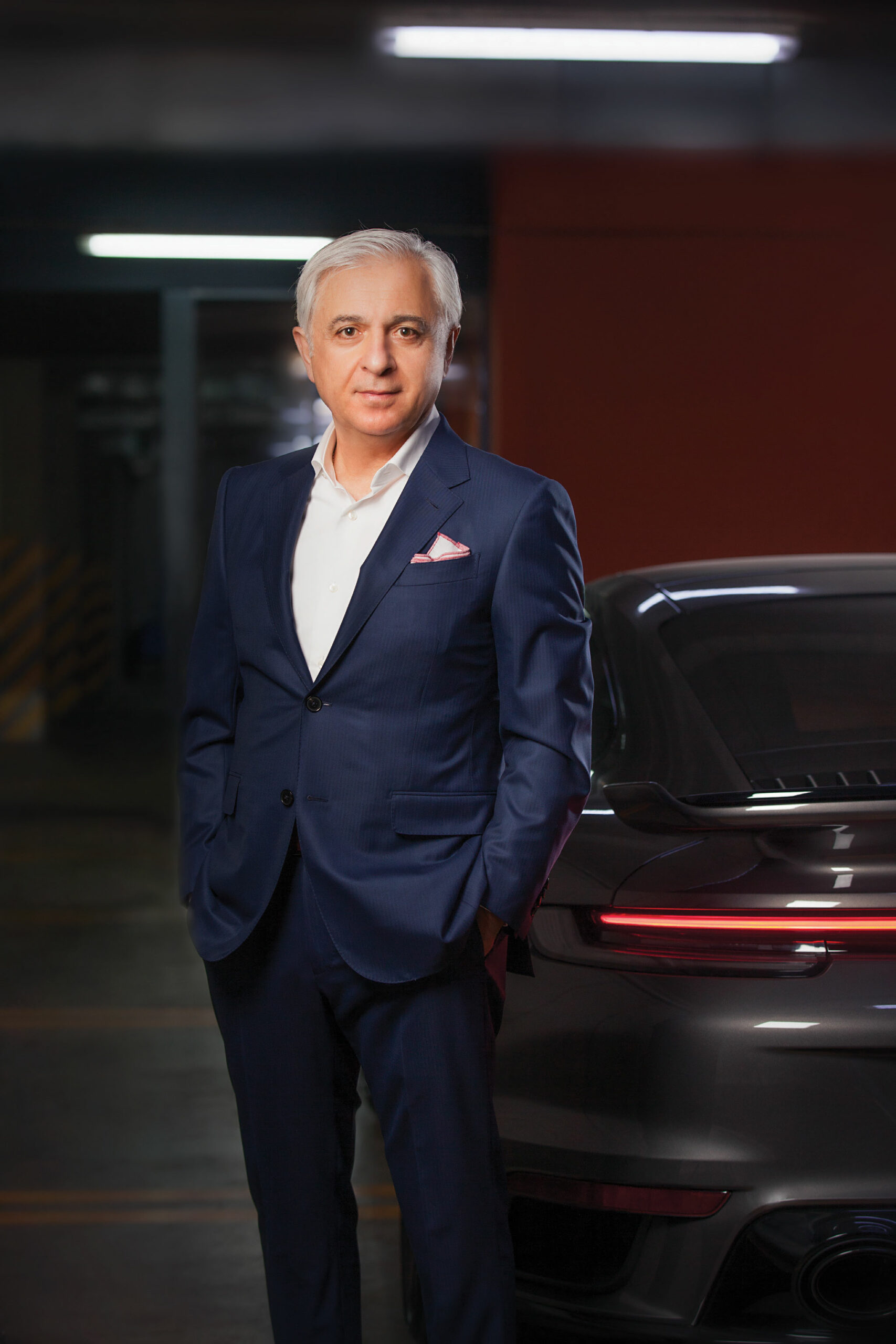
In the meantime, the competition on the market was heating up as others began importing tires as well. In response, in 1997 Temur bought a foreign company named “Tsitelkuda” and trademarked the name to prevent others from using it. The business was booming, and more people started to join the group (for example, Giorgi Mshvildadze joined in 1997). The company’s monthly profits were reaching the $100,000 mark, which is an impressive amount even by today’s standards. I ask Temur how he managed to post such figures, and his response is simple: “We were the only ones operating on the market without ‘cooking the books.’ Remember when I said that my calligraphy was appreciated even back when I was at Sovtransavto? The Russians were not trusted with dispatching – I was. So, I personally wrote the invoices when I came back to Georgia and started doing business here. This was a great comfort for our corporate clients and others who were looking to buy spare parts, lubricants, and tires. We ran a clean business, and we were successful. We used the consignment model to supply our large clients. We began trading in lari, and everything was booming. In 1998, we added the legendary Bridgestone tires to our existing supplies from Nizhnekamsk. We agreed on a significant marketing budget with the Bridgestone head office and began importing tires for all vehicle types, both large and small.”
∗ ∗ ∗
The de jure history of Tegeta started in 2001. Before that, the company was operating under the name Autoexport and included various shareholders who decided to split the business. Temur Kokhodze, together with Elguja Tsakadze, Giorgi Mshvildadze and Tariel Kiliptari, went on to found Tegeta. However, before we get to that point, it is important to go back to 1998 and a crucial moment for Temur Kokhodze, when he attended the famous mobility show in Frankfurt. What he saw at the 27-hectare venue would completely transform his views about the vehicle business, as well as help him establish new contacts.
“That is when I first met Franjo Vidicek, a Russian-speaking German with a Croatian background who first supplied us with Meguin oils,” Temur recalls. He also met another German named Gerner, who went on to visit Georgia. There he was treated to a feast at the home of Paata Zhghenti, one of the oldest members of the Tegeta team. Afterwards, the German guest informed his future Georgian partners that he would supply the company with Hofman machinery through consignment inventory. “Everything was of the highest standard – true German quality,” Temur remembers with a smile. For him, it was not the consignment sum of $20,000 that was important, but the precedent that was set by the Germans showing trust towards a Georgian business. As sales boomed, Mr. Gerner received his full investment within two months instead of six. He began increasing the consignment, but there was something even more important happening: The whole of Germany was getting to know Tegeta through Hofman. Many companies wanted to enter the post-Soviet market, and when they asked Gerner for a trustworthy partner, he would immediately refer them to Temur Kokhodze and his group. Germans started signing contracts and delivering supplies with confidence. At the same time, Tegeta’s brand portfolio was steadily growing. Thus began the high-profile partnership between Temur Kokhodze’s company and the German manufacturer MAN.
∗ ∗ ∗
“I wanted to build the best MAN service center in Europe. The Germans were especially fond of the MAN visitor center in Munich, which I visited several times. I took pictures, measured everything, and took notes. I was almost obsessed with the idea of creating something even better than what the manufacturer had in its home city. In the meantime, we obtained a $10.5 million syndicated loan from EBRD and TBC to build the Tegeta headquarters on Aghmashenebeli Alley across an area of 16,000m2, which has since grown to 60,000m2.” By then, the company was already stocking hundreds of brands of tires (Michelin, Pirelli, Continental, etc.), lubricants, spare parts, and trucks, which were sold not only in Georgia but also through the company’s regional branch for the South Caucasus and Asia.
What about passenger cars? Why did your company initially not wish to operate in this market, and why did you change your mind in 2010?
“You have no idea how many people were begging us to start importing passenger vehicles and parts. The demand was overwhelming. This is understandable because our customers had gotten used to receiving services with German precision from a Georgian company that was running a clean business. So eventually, we decided to enter this market. A famous car brand actually gave us the impetus to make this decision.”
Which brand are you talking about, and what do you mean by impetus?
The brand in question is Porsche. From what I can remember, their representative visited us in 2007 or 2008 and was shocked by the quality of infrastructure and services on show, which led him to sign a distribution agreement with us in 2010. Today we sell around ninety Porsche vehicles in Georgia alone. This used to be primarily a matter of image for us, but it is a profitable business now. Porsche made Tegeta famous, although the largest global passenger vehicle brands were already represented in Georgia through distributors or dealerships. Porsche was followed by Mazda, but getting Toyota was the big coup of course. In 2013, the Toyota head office announced its intention to open two dealerships in the South Caucasus region. We took part in the tender and won. We sold around 700 Toyota vehicles in our first year. Since then, we have been consistently selling more than 1,000 cars annually. We built the impressive Toyota Center on University Street for $8 million. The president of Toyota Caucasus was so impressed with the new infrastructure that he personally told me to name this service center Toyota Tegeta.”
This was followed by the amazing story of Volvo and another success in Europe.
“In 2018, I visited the Volvo office in Gothenburg together with Tegeta’s Swedish board member Per Gustav Ragnar Nilsson, our Head of Marketing and Investor Relations Vakho Kacharava and our Head of Projects Nino Kovziridze. Vakho Kacharava delivered a memorable presentation that impressed the Swedes. We were seeking to open a regional branch that would serve four countries, which was an extremely ambitious goal for a Georgian company. We were growing fast, albeit at a regional level, and we had no experience in macro distribution. Never mind Tegeta, not even Volvo had a draft macro distribution contract on hand. We were in Sweden for three days. One of the meetings with our hosts took place in one of the oldest restaurants in Gothenburg, where the vice-president of Volvo told us the story of how the company was founded. As it turned out, the decision to create the Volvo brand was taken in that same restaurant almost a century earlier (on 14th April 1927). Apparently, they had heard about my fondness for seafood, which is why they invited us there to announce their decision. To cut a long story short, we left Sweden with a macro distribution contract for four countries under the Tegeta brand. The agreement was signed and photographed in the aforementioned restaurant. This is how we launched Volvo, which has been posting outstanding sales figures and financial results both in Georgia and the wider region.
“2022 will be another important year for our passenger vehicle business. This year we will finish renovating the Porsche Center and build a new facility on University Street, which will house Tegeta and Volvo service centers under the same roof. We are investing a total of over H50 million in these three construction projects.”
∗ ∗ ∗
As I mentioned earlier, I have known the hero of our January cover story for a long time. I can, therefore, not ignore an important period of his career despite Forbes Georgia’s policy of distancing itself from political issues. Temur Kokhodze represented his native Baghdati in the Georgian Parliament of the seventh convocation. “I have absolutely no regrets about that period of my life. In fact, I am proud to have been a member of parliament. Apart from serving my home constituency, I met so many new people and got to know every corner of my native region. If it was not for my status as a parliamentarian, I might never have visited all those highland and lowland places of my constituency. I still enjoy hearing from strangers who tell me of their fond memories of the period when I represented them in the parliament. However, every story has a beginning and an end. I am grateful to have had the opportunity to serve and represent my native Baghdati and its people.”
∗ ∗ ∗
I also have to ask Temur Kokhodze about the Sairme resort, which is his other major asset along with Tegeta.
Did you ever think that you would one day own Sairme, or even get involved in this business at all?
“Never,” he tells me bluntly. He then produces a photo which he had prepared for the interview. In it I recognize Vasil Mzhavanadze and the panoramic views of Sairme. “And this is my uncle Shota Kokhodze, former First Secretary of the Mayakovsky (Baghdati) Rayon, who was actively involved in the construction of Sairme. This photo was taken in 1962. I had only been at the resort five or six times before, but at some point, I was asked to take over and revive the facility. Perhaps there are people who could have done a better job than me, but today Sairme is the most outstanding balneological resort in the region. I have invested around ₾80 million here and have given this resort all the care and love in the world. When I acquired Sairme, I put my dividends from the Tegeta business almost entirely into this resort for several years. Of course, state support and infrastructural solutions also played an invaluable role. Today, I am glad to see more than ₾5 million flow into the budget of Baghdati Municipality from this project each year.”

The Baghdati district currently has a permanent population of around 22,000. For a second, I imagine what it would be like if every municipality in Georgia had a project like the Sairme resort, funded by local or foreign investment, which generated ₾600,000 in revenues each month. Towards the end of our conversation, Temur Kokhodze reveals that he plans to replicate the model of his successful Tegeta Academy project by establishing a tourism and gastronomy academy at the Sairme resort. Together with restauranteur Guram Baghdoshvili and the widely popular Mananiko Ugulava, Temur hopes to start operating the academy soon, once the pandemic-enforced break is over.
∗ ∗ ∗
At the end of our interview, I ask Temur Kokhodze to evaluate his company’s impressive portfolio and the many brands represented in it. He interrupts me saying that he is not avoiding the question but wishes to say more about the Tegeta Academy first. “You would not believe how big the interest is, how many young people come to study and then stay with us.” As he talks about the academy, I see a level of enthusiasm that was not as apparent as when he spoke about the contracts with the German and Swedish car giants. Tegeta Academy is a forge of mechanics and professionals that was established due to the severe lack of qualified personnel. The exceptional standard, outstanding knowledge and special approaches employed by members of the Tegeta team have ensured that hundreds, if not thousands of people have shown an interest in working for the company. It is worth highlighting the growing female interest in joining our team, which is particularly high among the new generation. I can proudly say that some of our academy graduates are now working as branch directors.”
∗ ∗ ∗
Tegeta Holding is now one of the largest companies in the region that routinely gets asked to implement major projects across the country, be it public transport or infrastructure initiatives. Tegeta is always contacted and asked to participate, as both public and business entities know that the company’s development is ahead of its time. Tegeta’s involvement brings the same benefits to a project as an investment does – knowledge, technology, innovation, jobs, and revenue. Tegeta always stands for the highest quality. It is an accomplished Georgian brand that has been managed according to the highest business standards for numerous years. Temur Kokhodze highlights the company’s management system and financial diversification. He trusts the local currency – all company loans are in lari. The bond system is accepted as an unsecured financial resource, which is interesting and positive in terms of financial diversification. He, therefore, confidently announced a further issuance of 100M worth of bonds scheduled for the spring of 2022 and is open to all forms of diversification in the future.
So, what is Tegeta today?
The largest automobile company in the South Caucasus and Central Asia covers the full spectrum of vehicles – passenger cars, cargo transport and construction trucks, as well as commercial and industrial transport and garage machinery. Cargo, construction and specialized transport is all covered by two large companies in the form of Tegeta Truck & Bus and Tegeta Construction. The passenger car part of the business includes Porsche, Mazda, Volvo, and Toyota service centers. The company trades across four continents and is the importer of more than 300 leading brands in Georgia, the South Caucasus, and Asia. With around 3,000 personnel, Tegeta Holding is one of the largest employers in the country.
∗ ∗ ∗
There is an epilogue to this article, but certainly not to Tegeta’s development and plans. I ask Temur: “For those who do not know much about you or Tegeta, what would you highlight about the company, and what businesses do you own?” “Tegeta Holding and the Sairme resort – those are my businesses today. As for the rest, I believe – in fact – I am certain that Tegeta Holding will be worth $1 billion in three to five years’ time… Probably sooner.”
The fairy tale of Tegeta goes on with no end in sight. The company continues to grow in Georgia, in the South Caucasus and in Asia alike. Hard work and talent know no borders. They also know no end.


